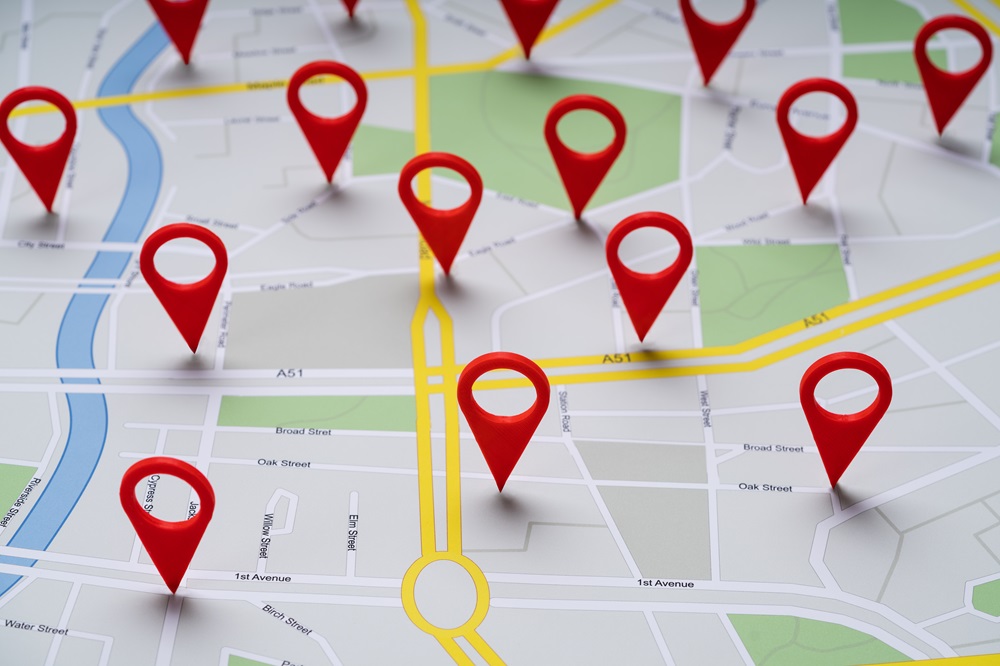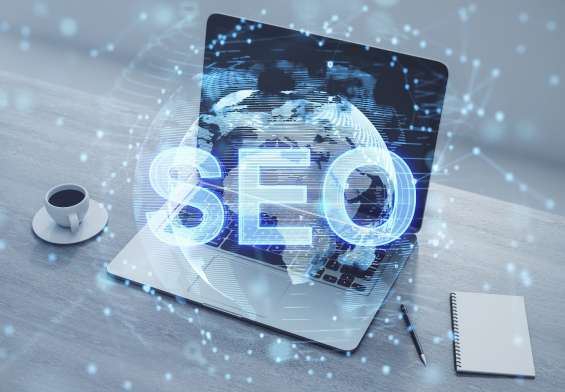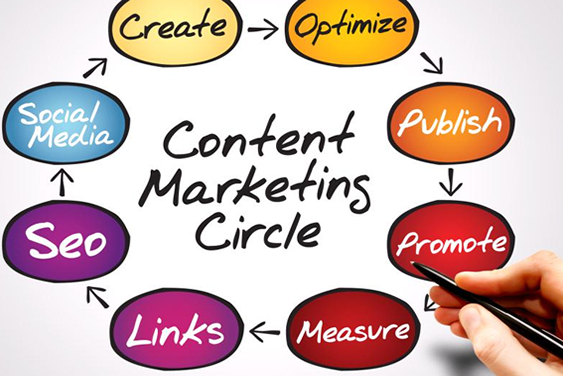When someone needs a dentist, a roofer, or a reliable takeout spot, they don’t flip through a phone book. They search online instead. Local internet marketing helps your business show up when they make that search. High intent and nearby customers put your business in the spotlight.
Getting more local eyes on your business bridges the gap between online visibility and in-person engagement. At its core, local internet marketing optimizes your digital presence for geographic relevance. This includes showing up in local search results, on map apps, and meeting your audience on the platforms they’re already using.
Whether you’re running a brick-and-mortar shop or offering services in a defined area, these strategies make your business easier to find and choose. More importantly, the value of the right people finding you at the right time can’t be denied.
Local internet marketing helps build trust with potential customers and drive measurable results. Amongst those results are calls, appointments, and walk-ins Those metrics make marketing a local business essential for community reach.
What Is Local Internet Marketing?
Local internet marketing is a digital strategy designed to connect businesses with customers in their immediate geographic area. It helps you show up in local search results, map listings, and platforms that focus on nearby options.
When someone searches “coffee shop near me” or “best pediatrician in Millburn.” for example, local internet marketing gets you in front of those eyes.
The main difference between local internet marketing and digital marketing in general comes down to scope and intent. General digital marketing can target anyone, anywhere. Local internet marketing focuses more on reaching people who live, work, or spend time near your business.
This means optimizing for map visibility, using region-specific keywords, and tailoring content to your local audience. You’re trying to drive real, location-based actions like walk-ins, phone calls, and service appointments instead of building national brand awareness.
Why Should Small Businesses Focus on Local Internet Marketing?
Small businesses need visibility, sure, but they can still grow even without a national audience. Local internet marketing allows you to focus your energy and resources where they matter most: in your own backyard.
When someone nearby is looking for the services you offer, you want your business to be the one they find first. Traditional advertising works too, but it lacks the precision of digital channels.
That precision lets you target specific zip codes, neighborhoods, or towns. This helps you reach people who are most likely to become customers. That kind of targeting is more efficient, and more importantly, cost-effective.
There’s also a certain level of trust involved. People are more inclined to support local businesses that feel familiar and accessible. You can cultivate those sentiments by showing up in search results, staying active on local social media platforms, and maintaining consistent listings.
Over time, those sentiments become loyalty, referrals, and repeat business.
Examples of Local Internet Marketing in Action
A Contractor Using Google Business Profile Posts Weekly
A home renovation contractor in New Jersey had already claimed their Google Business Profile, but they weren’t using it. No posts, no new photos, no customer engagement. They decided to use NJ local SEO change that.
They started posting weekly updates featuring before-and-after shots of projects, seasonal home maintenance tips, and reminders about service availability. This deliberate move allows Google’s local algorithm to kick in, and keeps things current for potential clients.
By posting consistently and showcasing relevant local work, the contractor became more visible in map listings. They began appearing more often for queries like “deck contractor near me.” A measurable increase in inquiries from homeowners in surrounding towns soon followed.
Maintaining an active profile gave them a competitive edge by keeping their business foremost in real-time local searches.
A Café Targeting Nearby Instagram Users with Ads
This café was struggling with midweek foot traffic. While they had a decent weekend crowd, weekday lunches were slow. They decided to test Instagram ads targeting users within a three-mile radius of their location.
The ads ran from 10 a.m. to 1 p.m. and showcased daily lunch specials with appealing food photography and clear pricing. The strategy was built around timing and proximity. Two essential elements of successful local paid ads.
By showing up on potential customers’ feeds at lunchtime, the café captured attention when it mattered most. Within weeks, they saw increased lunch orders and heard from new customers that they’d visited after seeing the ads.
This kind of well-timed targeting turns digital impressions into same-day foot traffic.
A Boutique Ranking for “[Town Name] Clothing Store”
A boutique with many locations across northern New Jersey noticed that while they had solid general SEO, their site wasn’t appearing in search results. They weren’t ranking when someone searched “clothing store in [specific town].” To solve this, they created individual landing pages for each service area.
Each page featured a tailored welcome message, store directions, parking tips, and highlights of locally relevant product collections. The change allowed them to better align with how people in different areas searched for shops nearby.
These town-specific pages helped Google understand the boutique’s service areas and gave customers content that felt locally relevant. As a result, organic traffic increased, bounce rates fell, and shoppers were more likely to visit the nearest store in person.
This approach stands out because it allows a single brand to dominate search visibility in many communities. They’re also squeezing the most out of their efforts and content.
A Cleaning Company Boosting Reviews to Improve Map Visibility
A residential cleaning company had been operating successfully for years but struggled to rank in Google’s local map results. They were competing with newer businesses that had more recent reviews.
To improve this, they created a simple follow-up process. Every time a job was completed, the client received a thank-you email with a direct link to leave a Google review. They also began responding to every review with a personalized reply that mentioned the town or service performed.
This improved the quantity and recency of their online reputation. Frequent, personalized reviews helped boost their credibility. It also gave potential customers insight into their reliability.
Over time, the business moved from the second or third page of map results into the top three, which dramatically increased phone inquiries. Reviews act as both social proof and a local ranking factor, so they were building trust and visibility at the same time.
A Pet Groomer Promoting Their Services Through Local Social Media
A pet grooming business had loyal clients but wanted to reach new pet owners in the area. They started sharing weekly posts featuring “before and after” grooming transformations, pet care tips, and shoutouts to local animal shelters.
Each post tagged their town, nearby parks, or local pet-related events. They also reshared customer posts when clients tagged the business. This approach helped with visibility and with building local affinity.
By embedding themselves into the social fabric of the community, the groomer gained exposure through shares, tags, and word-of-mouth. Their follower count grew steadily, appointments increased, and they began receiving referrals from shelters and other local pet services they had featured.
Community-focused content gave their marketing a grassroots boost that felt authentic instead of promotional.
A Salon Using Email Campaigns to Fill Appointment Gaps
A salon noticed recurring lulls on Tuesdays and Wednesdays. They could have ran public promotions, but they chose to segmented their email list by appointment history and sent exclusive midweek specials to nearby past clients.
The emails included stylist availability, featured products, and tips on hair care between visits. It wasn’t a generic email blast, but a deliberate attempt to re-engage lapsed customers and fill underperforming time slots.
By targeting people who had already visited and lived nearby, the salon increased the odds of conversion. The email tone was casual but informative, and it emphasized convenience and value.
Customers appreciated the personal touch and exclusive access to time-sensitive deals. It’s a smart tactic because it reactivates dormant leads and maximizes revenue without spending more on ads.
How to Get Started with Local Internet Marketing
If you’re new to local internet marketing, getting started doesn’t have to be overwhelming. A few foundational steps can significantly improve how visible, and competitive, your business becomes in your area.
The key is to focus on the platforms and strategies that make it easy for local customers to find and trust you online.
1. Claim and Optimize Your Google Business Profile
This is the most important starting point for any local strategy. Make sure your profile is verified, your contact information is accurate, and your business categories reflect the services you actually offer.
Upload photos, add service areas, and keep a consistent posting schedule to stay visible in the map pack.
2. Identify Target Keywords and Service Areas
Use tools like Google Keyword Planner, Ubersuggest, or even the autocomplete suggestions in Google to discover what people in your area are searching for. Focus on phrases like “[service] in [town]” or “[product] near me.”
Use this research to guide how you title pages, write descriptions, and label your ads.
3. Build or Update Your Website with Local SEO in Mind
Your website should reflect your physical location(s) and service range. Add town names to your page titles and meta descriptions, include directions or landmarks when possible, and use schema markup to help search engines better understand your business location and services. For additional tips, see our post on optimizing for Google’s MUM update.
4. Develop Content Around Your Local Audience
Write blog posts, FAQs, or landing pages that address region-specific topics. That could mean seasonal service needs, local regulations, or community events. If you serve many towns, consider creating individual pages for each one.
Blogging for SEO is one of the best ways to build local relevance over time.
5. Run Local Paid Ad Campaigns (Optional but Powerful)
Platforms like Google Ads and Facebook allow precise geographic targeting. Even with a modest budget, you can reach users within a few miles of your storefront or service area.
These ads work best when tied to limited-time offers, new product launches, or special events.
6. Stay Active on Local Social Media
Social media helps with engagement, but it’s also a local trust signal. Post photos, tag your town or neighborhood, highlight local partnerships, and engage with other community businesses.
You don’t need to be everywhere. Choose the platform your audience uses most and stay consistent.
7. Ask for Reviews and Respond
Reviews influence rankings and consumer decisions. Build review requests into your follow-up process, and always respond, especially to negative ones.
Mentioning specific services or towns in your replies reinforces local relevance and shows you’re dedicated to your customers.
Following this step-by-step process builds a strong, sustainable, and scalable local presence. It gives your business the structure it needs to compete online while staying grounded in your community.
Local Internet Marketing FAQs
Is local internet marketing different from traditional SEO?
Yes. Traditional SEO targets broad visibility. Local internet marketing focuses on helping your business appear in local search results, maps, and directories.
It includes strategies like Google Business Profile optimization, location-based keywords, and geo-targeted ads, all tailored to connect with nearby customers.
Can local internet marketing help service businesses without a storefront?
Absolutely. Many mobile businesses rely on local internet marketing to reach customers in specific areas.
Even without a physical storefront, you can appear in local search results, run neighborhood-specific ads, and build a strong online reputation in the area you serve.
How often should I update my local listings or social content?
At least once every one to two weeks. Regular updates signal to search engines that your business is active and trustworthy.
Posting new photos, responding to reviews, or sharing a quick update helps you stay visible to local searchers.
What’s the first step I should take if I’m new to local marketing?
Start by claiming and optimizing your Google Business Profile. It’s free, easy to set up, and forms the foundation of your local search presence.
From there, build out your website’s local content, ask for reviews, and expand into paid ads or social media as needed.
Make Local Internet Marketing Work for You
Local internet marketing is a practical, results-driven way to connect with the people in your community who are actively looking for what you offer. Showing up in the right local search results can directly impact your bottom line, regardless of the business you run.
What makes this approach so powerful is how targeted and accessible it is. Instead of wasting time, money and effort trying to reach everyone, you’re focusing on the people most likely to visit, call, or book with you.
With the right foundation in place, you create a lasting presence that works for you 24/7. If you’ve been waiting for the right time to invest in your local visibility, start now.
Pick one strategy from this guide and take action. The sooner you do, the sooner nearby customers will start finding your business.





